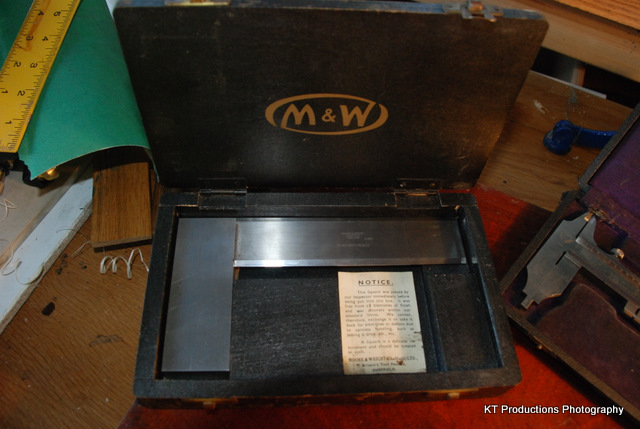thomvic
Established Member
It is often said that the only accurate try squares are engineers squares. If that is so then why do they make and sell carpenters squares?
Richard
Richard

Racers":qulyjbwb said:cut it with an axe,
Pete
Peter Sefton":3mhamh2e said:I always suggest that my students buy engineers squares, some carpenters try squares do stay square but not many in my experience, and don’t assume that just because it is an engineer’s square that it will be accurate
I find Fisher and Moore & Wright Engineers Squares very reliable. Available in workshop grade 'B' or inspection grade 'A'.

dunbarhamlin":1693yg0u said:
LuptonM":2l5ri2e3 said:Well maybe that engineering squares are closer to 90 degrees than woodworking squares- the cheap ones are out by a comical amount and aren't even good enough for paper weights
(I am back BTW- exams finished yey!!!!!!!!!!!!)
If two different references show something to be 'square', then that's square! Any two squares are highly unlikely to be 'out' by exactly the same amount. That is usually close enough for woodwork.
I never teach my pupils. I only attempt to provide the conditions in which they can learn. A.E. 8)
bosshogg":31v49gic said:...... for the life of me I can't see any advantages in bypassing experience and skill with the quest for buying an abundance of expensive tools.
Learning the way things used to be done, gives one an understanding of the "why" all the drudgery of hard graft gives one the reason for things like power tools, gaining the experience and skills gives one the eye for precise beauty. Putting all of these together makes one a craftsman...
bosshogg":115ctph2 said:How do you mean "mutually exclusive"...bosshogg
IMHO it's because a wood handle with rounded edges will do less damage if dropped onto your workpiece - and, if properly balanced (many are not) will sit on the workpiece unaided, without tilting and falling off, which is a trivial detail but quite useful if you are doing a mass mark-up with the usual occasional interruptions.thomvic":16k4fkf6 said:It is often said that the only accurate try squares are engineers squares. If that is so then why do they make and sell carpenters squares?
Richard
Enter your email address to join: